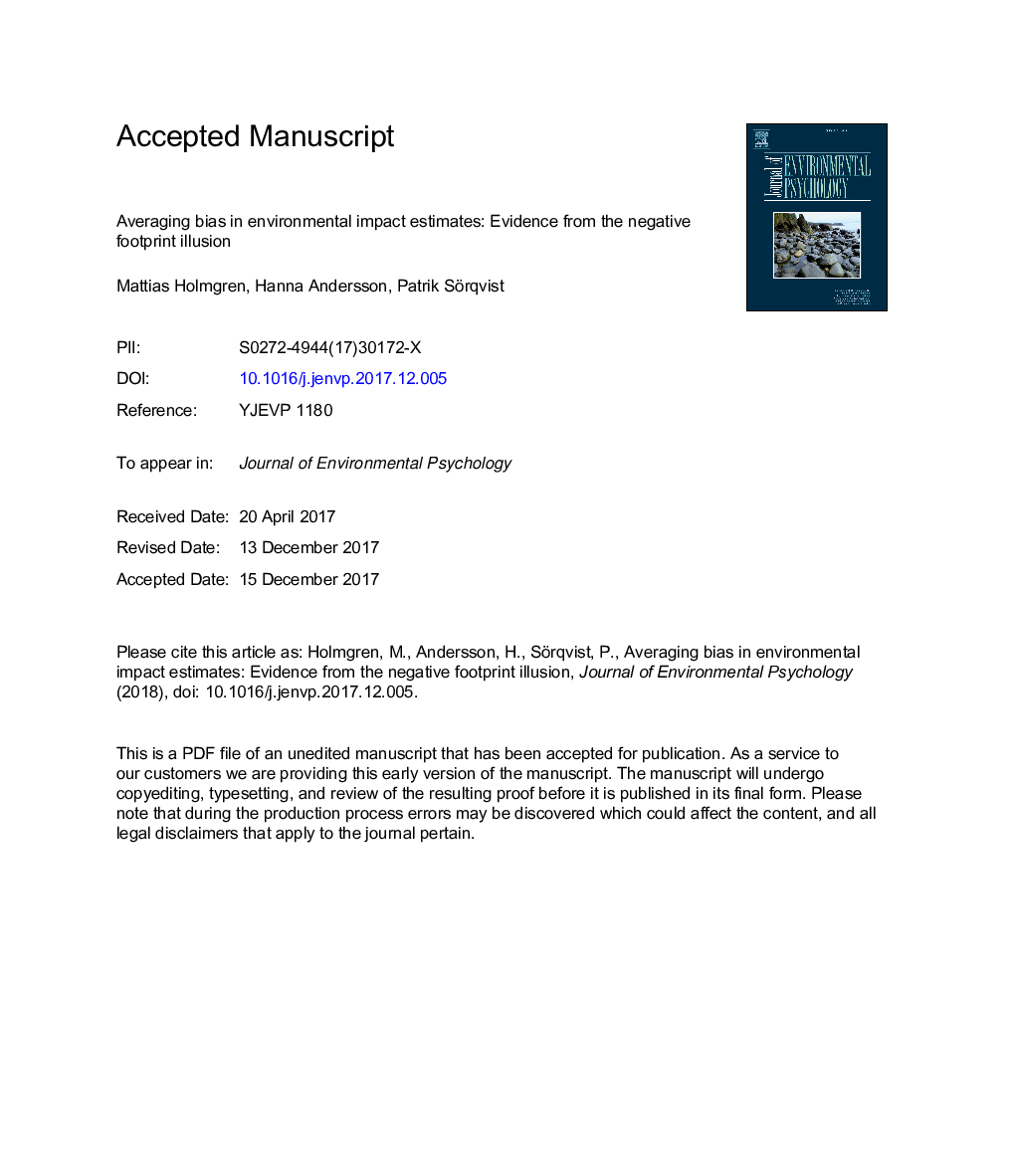| Article ID | Journal | Published Year | Pages | File Type |
|---|---|---|---|---|
| 7245259 | Journal of Environmental Psychology | 2018 | 22 Pages |
Abstract
In this paper we argue that unsustainable behaviors often stem from a common averaging bias when people estimate the environmental impact of a set of environmentally friendly and less friendly objects or actions. In Experiment 1, we show that people believe that the total carbon footprint of a category of items (a community of buildings in this case) is lower, rather than higher, when environmentally friendly (“green” buildings) items are added to the category, a negative footprint illusion. Experiment 2 showed that the carbon footprint estimate assigned to a category with a mix of environmentally friendly and less friendly objects (“green” and conventional buildings) is the average of its subsets (the “green” buildings and the conventional buildings, respectively), an averaging bias. A similar averaging process may underpin estimates of the environmental impact of people's own actions, explaining why people believe that environmentally friendly actions can compensate for less friendly actions.
Keywords
Related Topics
Social Sciences and Humanities
Psychology
Applied Psychology
Authors
Mattias Holmgren, Hanna Andersson, Patrik Sörqvist,
